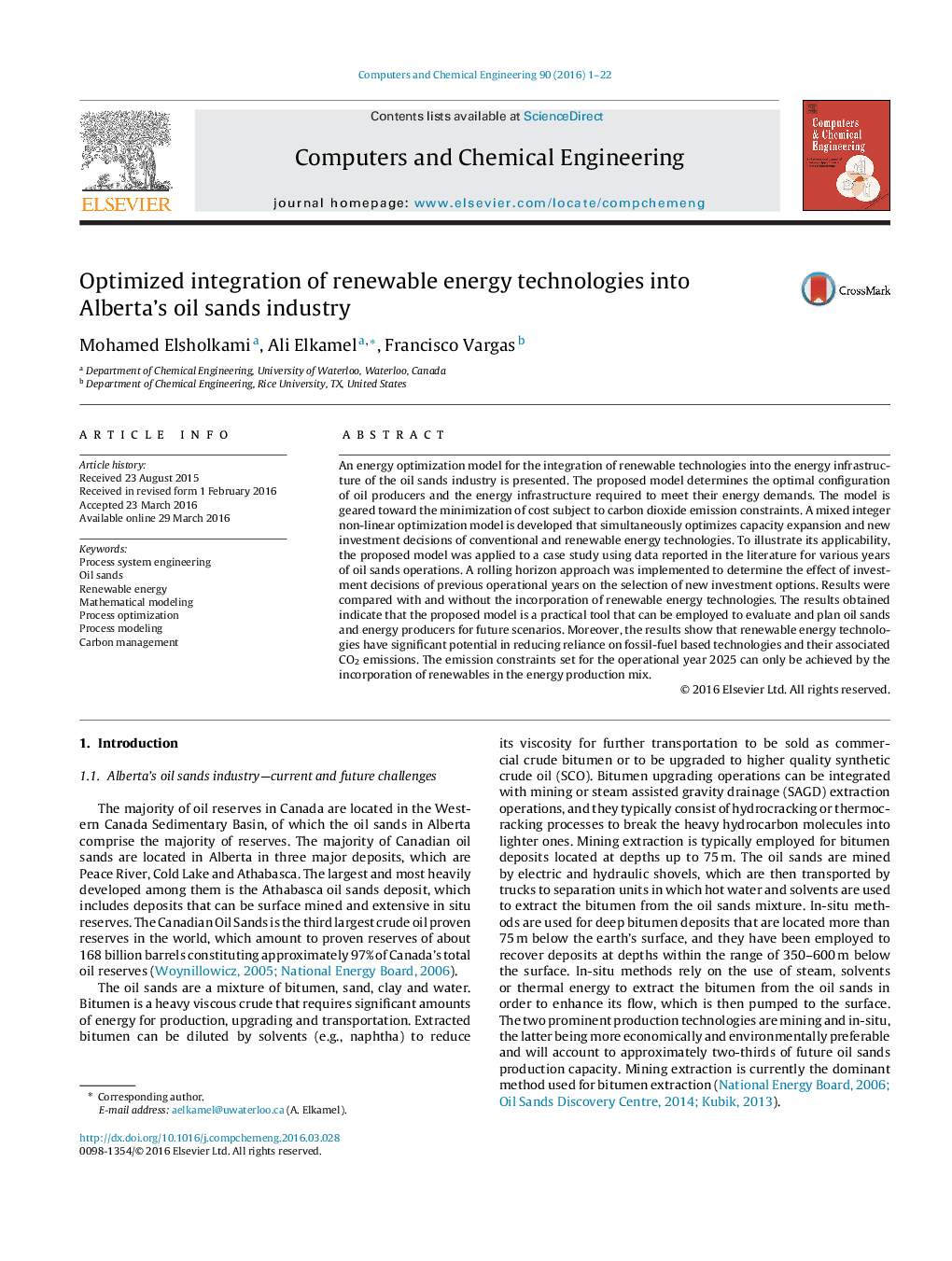| Article ID | Journal | Published Year | Pages | File Type |
|---|---|---|---|---|
| 6595313 | Computers & Chemical Engineering | 2016 | 22 Pages |
Abstract
An energy optimization model for the integration of renewable technologies into the energy infrastructure of the oil sands industry is presented. The proposed model determines the optimal configuration of oil producers and the energy infrastructure required to meet their energy demands. The model is geared toward the minimization of cost subject to carbon dioxide emission constraints. A mixed integer non-linear optimization model is developed that simultaneously optimizes capacity expansion and new investment decisions of conventional and renewable energy technologies. To illustrate its applicability, the proposed model was applied to a case study using data reported in the literature for various years of oil sands operations. A rolling horizon approach was implemented to determine the effect of investment decisions of previous operational years on the selection of new investment options. Results were compared with and without the incorporation of renewable energy technologies. The results obtained indicate that the proposed model is a practical tool that can be employed to evaluate and plan oil sands and energy producers for future scenarios. Moreover, the results show that renewable energy technologies have significant potential in reducing reliance on fossil-fuel based technologies and their associated CO2 emissions. The emission constraints set for the operational year 2025 can only be achieved by the incorporation of renewables in the energy production mix.
Keywords
Related Topics
Physical Sciences and Engineering
Chemical Engineering
Chemical Engineering (General)
Authors
Mohamed Elsholkami, Ali Elkamel, Francisco Vargas,
